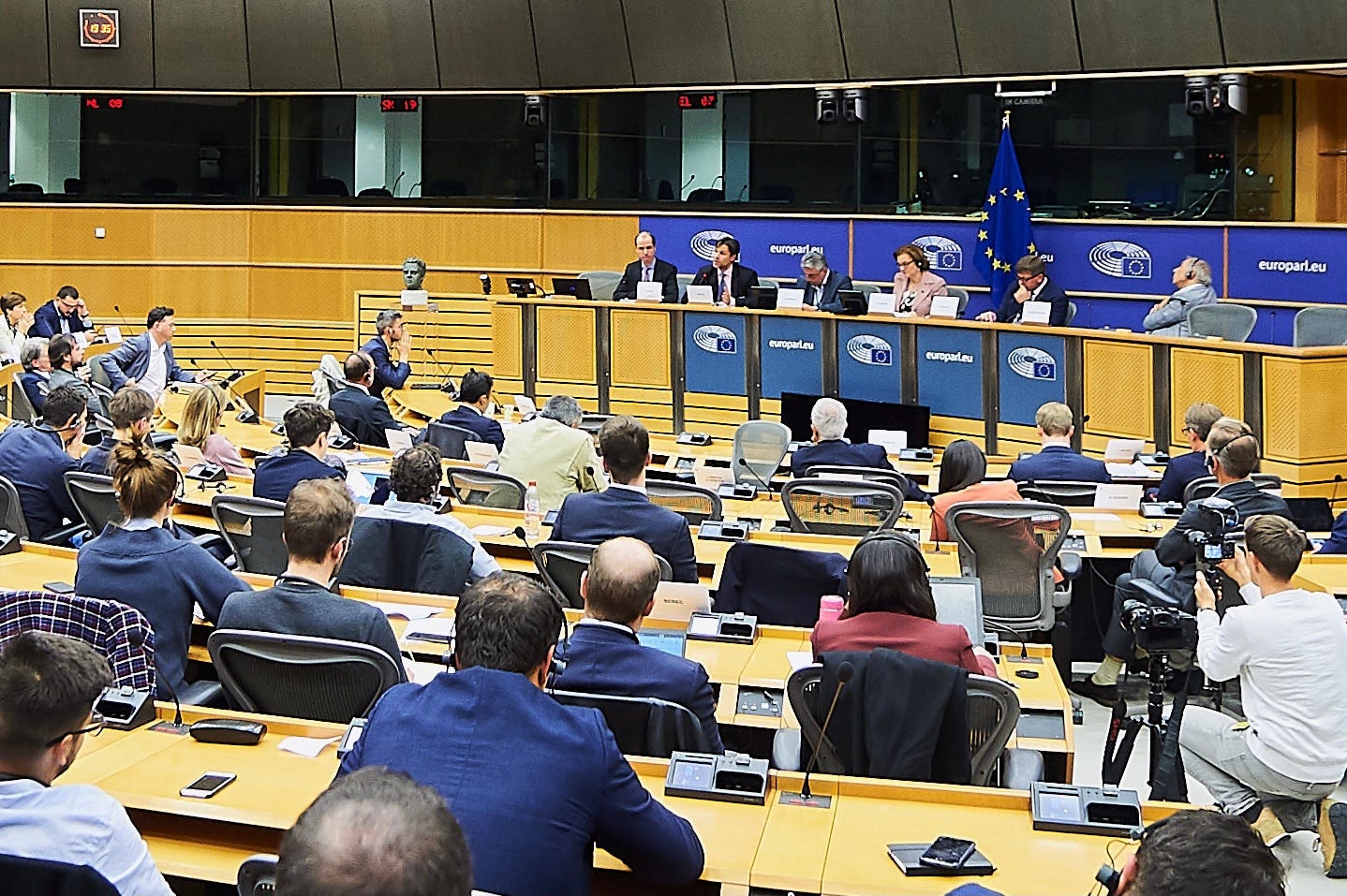Many goals, wrong tool: the tariff trainwreck that violates economic logic
90-day pause, whether miscalculated defeat or narrowing in on China, containment won’t solve America’s structural issue
Maybe the majority of analysts have simply overlooked the “genius strategy” behind the Trump administration’s global tariff shock and final push towards upending the rules-based global trade order the U.S. had once established—something like Schumpeterian “disruptive innovation,” but aimed at turning around crumbling empires. Some have even drawn parallels to extreme measures, such as Ronald Reagan’s, who excessively raised military spending to instigate the collapse of the Soviet Union, which couldn’t keep up, and to Angela Merkel’s, who resisted printing money to bail out Greece during the EU’s debt crisis. In short: there is no genius strategy—the sudden 90-day tariff pause for all countries except China suggests a miscalculated defeat due to fear of a collapsing bond market (putting US’s entire financial system at risk) or simply an attempt to narrow in on China (over 70 governments have reportedly reached out to the U.S. seeking negotiations, while China has retaliated). The 20% drop in the stock market was apparently taken into account, justified by the claim that Trump cares about Main Street, not Wall Street. “Only 10% of people own 88% of U.S. stocks, and Trump cares about the other 90%,” reassured Treasury Secretary Scott Bessent.
Regarding China, instigating another trade war to contain China not only dangerously denies the inevitability of a multipolar world but also remains prone to failure, as was already the case during President Trump’s first term—which I had the opportunity to point out at a special hearing on China in the European Parliament in October 2019: “No Winners: The Failed Trade War between the United States and China.”
Now, the ongoing escalation of U.S. tariffs on Chinese goods, now reaching 145%, will undoubtedly hurt China severely in the short term. Beijing has hit back with tariffs now at 84%. However, this will only serve to further encourage China to break away from U.S. and relentlessly continue with its diversification efforts. Since President Trump's first term, China has reduced its export dependency on the U.S. — from 20% to 13% of its total exports — and has been working to establish an alternative to the Western financial system.

No doubt, as Dani Rodrik highlights, “a healthy world economy necessarily rests on healthy national economies,” especially a healthy American one. The U.S. faces serious policy challenges: reindustrialization, reducing the trade deficit, creating high-paying jobs, and managing unsustainable debt. But instead of deploying a strategic mix of tools, it places tariffs at the core of solving all these issues— and the current 90-day pause doesn’t promise a sudden shift in mindset.
The Tinbergen Rule should remind governments that each policy objective needs its own tool. When it comes to US’s structural issues, not only does the Trump administration ignore that rule, but they also use the wrong tool. The chronic trade deficit, which the U.S. has maintained not only with China but with almost every other economy in the world for decades (yet, the service trade points to a different story, or GAFAM operating local branches whose sales are not part of the equation), is not the main problem. It’s a symptom.
The core problem manifests itself in the U.S.'s severe savings and investment gap. Net domestic saving as a percentage of GDP has dropped from over 13% in the 1960s (when the US still produced itself surpluses) to near 0% today. This leaves America without savings needed to fund critical infrastructure and expand productive capacity. With savings at near zero, the U.S. relies on foreign capital. This has led to excessive wealth, but often allocated for quick returns or deficit recycling, including with surplus economies like China, rather than investing in domestic development.
The private sector, flush with cash, exacerbates this by prioritizing stock buybacks over reinvestment in infrastructure, manufacturing, and technology. While tariffs may offer short-term fixes by reshoring some production, they cannot address the underlying issue: the lack of long-term investment. Besides, the income generated from tariffs by no means compensates for the government’s excessive expenditures. But this doesn’t seem to be the point: it is simply to prevent Americans to buy Chinese products.
However, without a surge in domestic investment and a comprehensive strategy—through incentivizing private sector investment, promoting long-term saving and investment culture, targeted fiscal and industrial policies, reforming the tax system and public spending—the U.S. will remain trapped in a cycle of underinvestment, deepening structural instability and weakening its competitiveness in a multipolar world.
The fetish on tariffs and geographic aspirations make President Trump’s approach clearly populist. Tariff hikes won’t solve these structural issues, and without a broader strategy, the U.S. is doomed to failure. Neither China, Europe, nor any other country is to blame for the U.S.’s chronic policy failure. Even though U.S.'s overconsumption and deficit recycling have been the engine for global growth—albeit a clearly unsustainable one—this still doesn’t justify reckless foreign policies and coercive economics. Even worse, America is compromising the residual trust the world still had. Any future relationship and agreement will be purely grounded in brute interest and relative advantage. For now, we will see 90 days of uncertainty, and at the current rate, trade between the US and China will come to a halt. In an unprecedented way, the U.S. has weaponizes tariffs as coercive leverage—only to withdraw them after extracting concessions—to keep surplus economies and major bondholders locked into its deficit mechanism and push for the relocation of operations to the U.S., which still won’t resolve America’s structural problems. There are few concessions that Japan, South Korea, or the EU can offer. China has all the means to resist.




